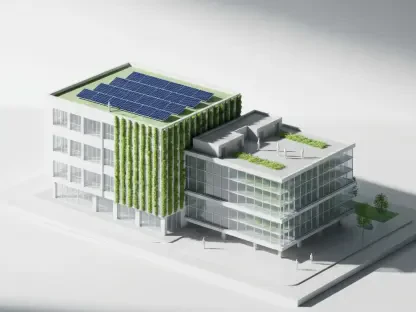Innovative strides from the University of St Andrews have unveiled a groundbreaking prospect where smart buildings could operate using ambient energy instead of relying heavily on traditional power sources. This pioneering research, detailed in Advanced Functional Materials, focuses on low-dimensional halide perovskites. These materials exhibit the astonishing capability to convert light, heat, and motion into electricity, an area of study being explored extensively for the first time in their thin film form. The potential applications are promising, especially considering the burgeoning world of the Internet of Things (IoT), where the number of connected devices is predicted to soar by the end of this decade. This technology not only invites more efficient energy solutions but also promises significant reductions in energy dependency and consumption.
The Benefits of Halide Perovskites
Relying on traditional batteries has raised concerns surrounding sustainability, efficiency, and maintenance. In contrast, the emergence of halide perovskites marks a shift towards flexible and more cost-effective solutions. These materials can capture and convert ambient energy even in controlled, indoor environments, substantially minimizing the need for conventional battery power. This development is pivotal towards achieving the vision of sustainable and continuous energy supply, a necessity as global systems transform through Industry 4.0 advancements. By investing in and emphasizing the use of ambient energy, the reliance on battery replacements can be considerably reduced, thereby enhancing operational strategies and environmental impact. This aligns with a global objective of creating resilient and environmentally friendly energy systems, positioning buildings as active contributors to these goals.
Implications for Urban Planning and Sustainability
Buildings are currently major contributors to global energy consumption and carbon emissions. Integrating technologies like halide perovskites with IoT systems could yield substantial benefits, potentially cutting energy use dramatically. The research propels a significant step toward self-sustaining infrastructures, advocating for eco-friendly urban planning initiatives and supporting worldwide sustainability practices. Beyond energy efficiency, adopting these technologies could foster advancement in other vital sectors, such as healthcare, by ensuring more dependable power supplies for critical services. This coherent vision of proactively enhancing infrastructure underscores the growing importance of sustainable urban development. As the technology progresses, it is anticipated to drive a fundamental change in how future cities and critical infrastructures manage energy, highlighting a shift towards maximizing resource efficiency and minimizing ecological footprints.









